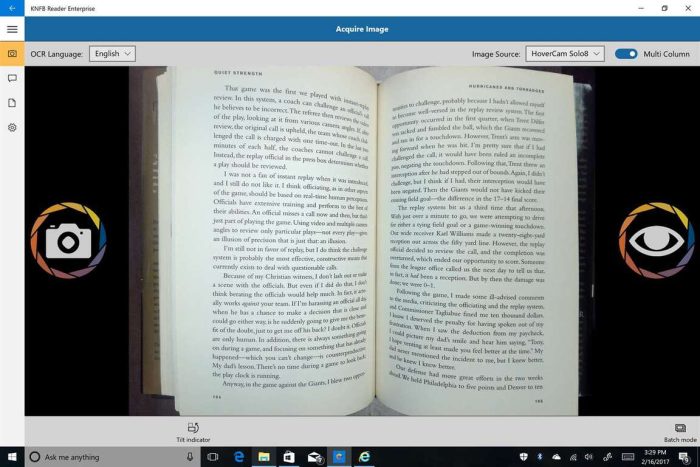Microsoft expands Accessibility website, launches KNFB Reader for the blind
3 min. read
Published on
Read our disclosure page to find out how can you help Windows Report sustain the editorial team Read more

In a new blog post, Microsoft is taking a look back to the past and to the future of accessibility at Microsoft. New additions include the KNFB Reader app for Windows 10 as well as an expanded Microsoft Accessibility website.
The KNFB Reader for Windows 10 was created by Microsoft in partnership with the National Federation of the Blind and Sensotec. It helps blind people be able to read documents by taking pictures of documents, and converts the image to text that can be read aloud by a voice assistant (like Cortana) or converted to Braille, when using a special screen reader.
The KNFB Reader uses audio and vibration guidance to properly line up the camera to take a correct picture of the image for text-to audio or Braille conversion. KNFB Reader is also a helpful Windows 10 app for converting image-based PDF files. KNFB Reader is available for Windows 10, Android, and iOS. The Windows Store is offering KNFB Reader for a limited introductory price of $19.99 until March 5, 2017. After that, KNFB Reader will be available for its original price of $99.99.
Download KNFB Reader today.
Another new development is redesigned and expanded Microsoft Accessibility website. Microsoft relied solely on customer feedback to redesign the Microsoft Accessibility website. The customer feedback also helped Microsoft continue to improve its accessibility features in Windows 10, Office 365, Microsoft Cloud & Enterprise products and services, and even made accessibility improvements to the Xbox One.
On Global Accessibility Awareness Day in 2016, Microsoft shared an update about upcoming accessibility features for Windows 10 and Office 365. The Windows 10 Anniversary Update brought an improved screen reading experience and faster speech-to-text translation in Microsoft Narrator, better accessibility in Microsoft Edge, Outlook Mail, and the Start menu.
Over the last year, Microsoft has made extensive strides in improving its Microsoft Disability Answer Desk, providing additional chat options for people with disabilities. Here is a video of actress Marlee Matlin getting help from the Microsoft Disability Answer Desk about setting up her new Surface Pro 4 communicating in American Sign Language (ASL).
There are more accessibility features coming to other Microsoft products and services. In the coming months, Microsoft’s Cloud & Enterprise division will be making new accessibility improvements to Power BI, Dynamics 365, and Visual Studio by providing enhanced screen reader support, screen magnification and high contrast support, and better keyboard accessibility options.
If you have any comments or suggestions for Microsoft about the KFNB Reader, or the expanded Accessibility website, let Microsoft know through the Disability Answer Desk or the Microsoft Accessibility UserVoice.









